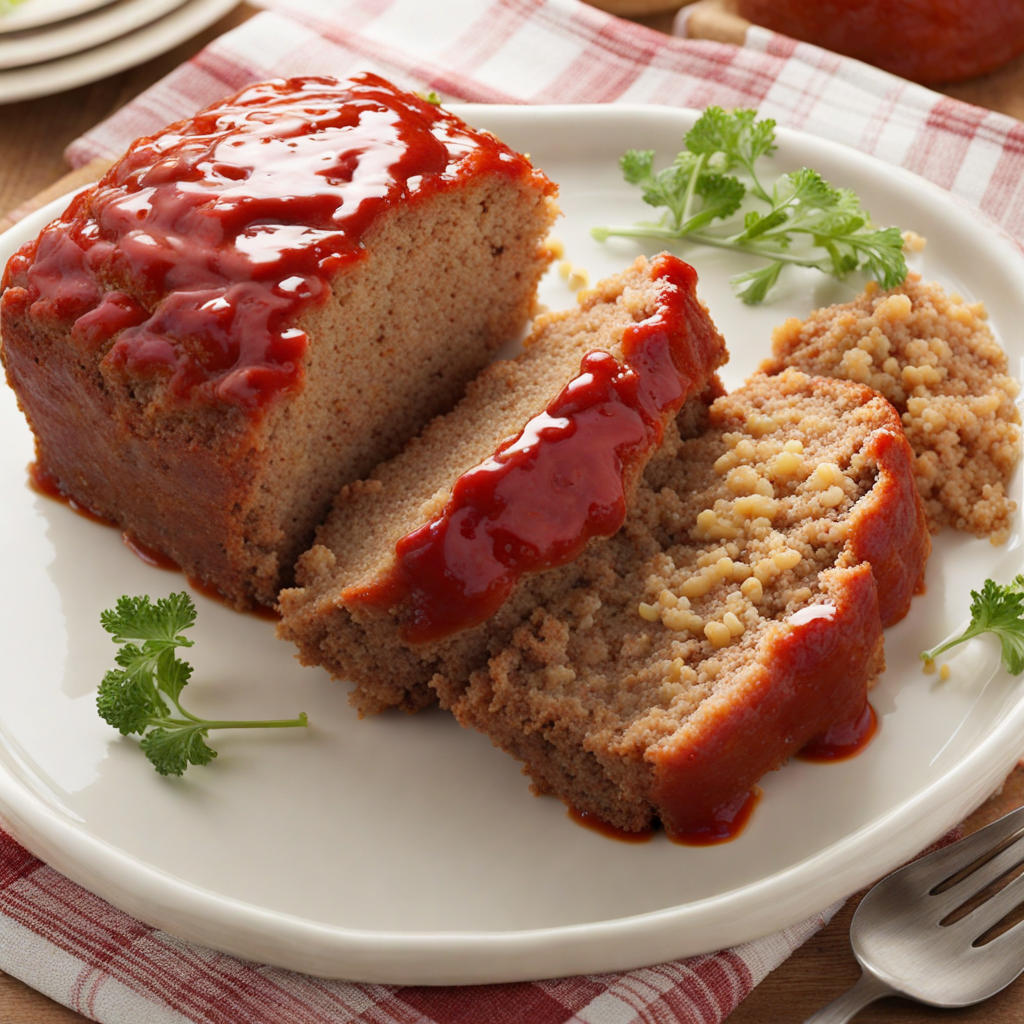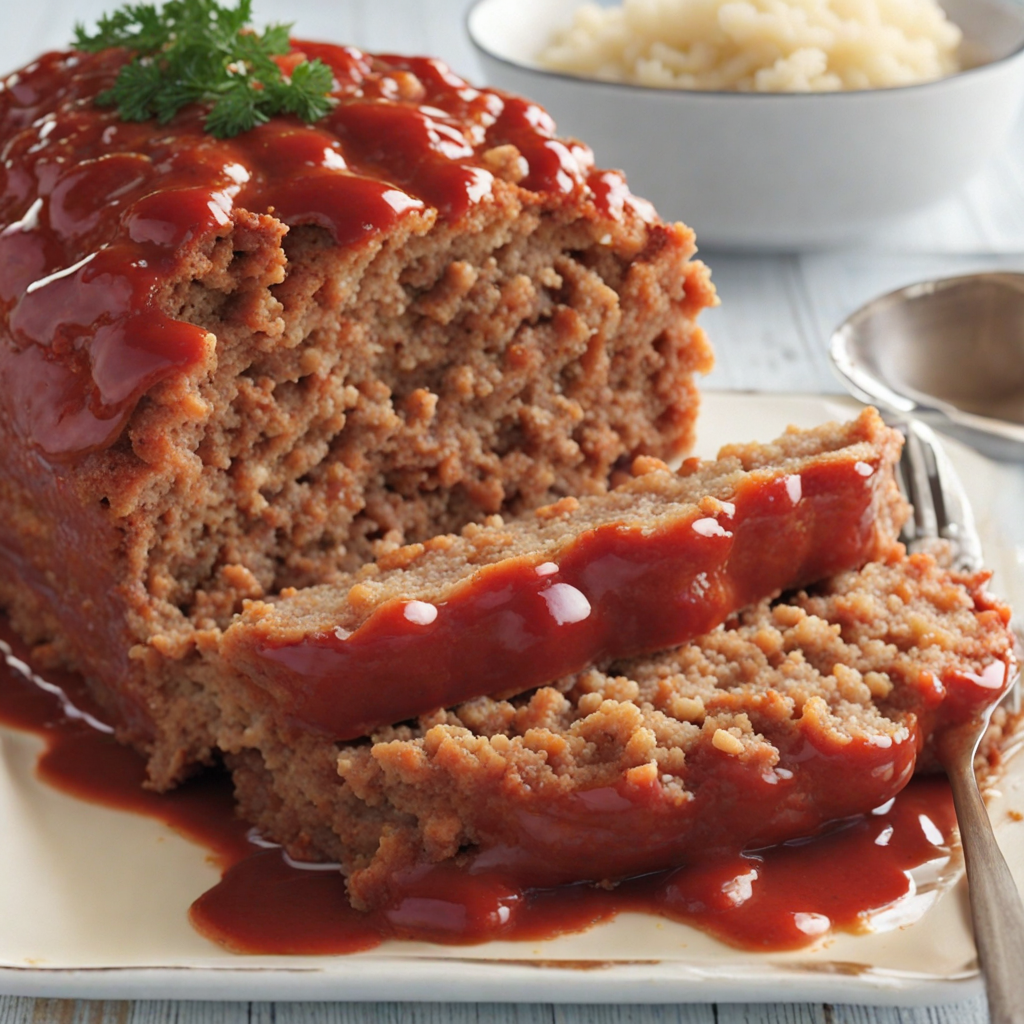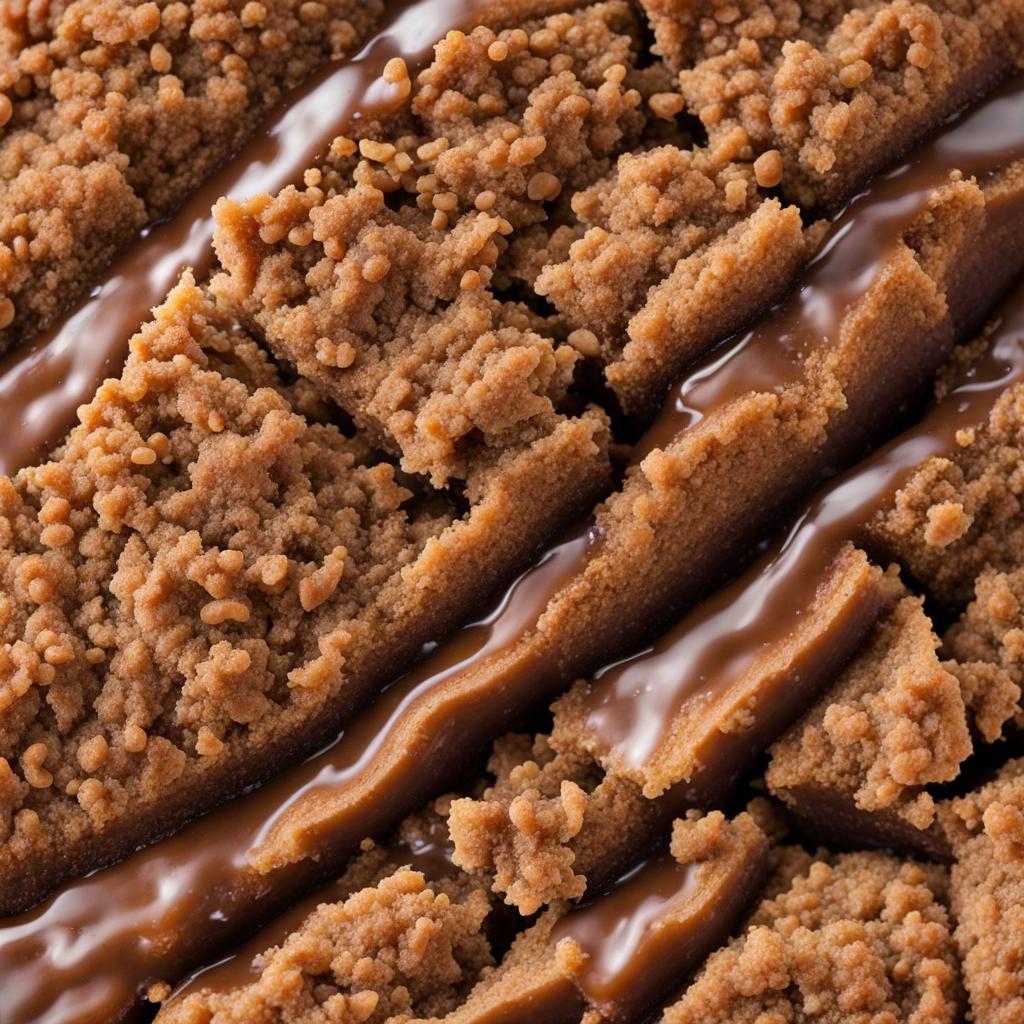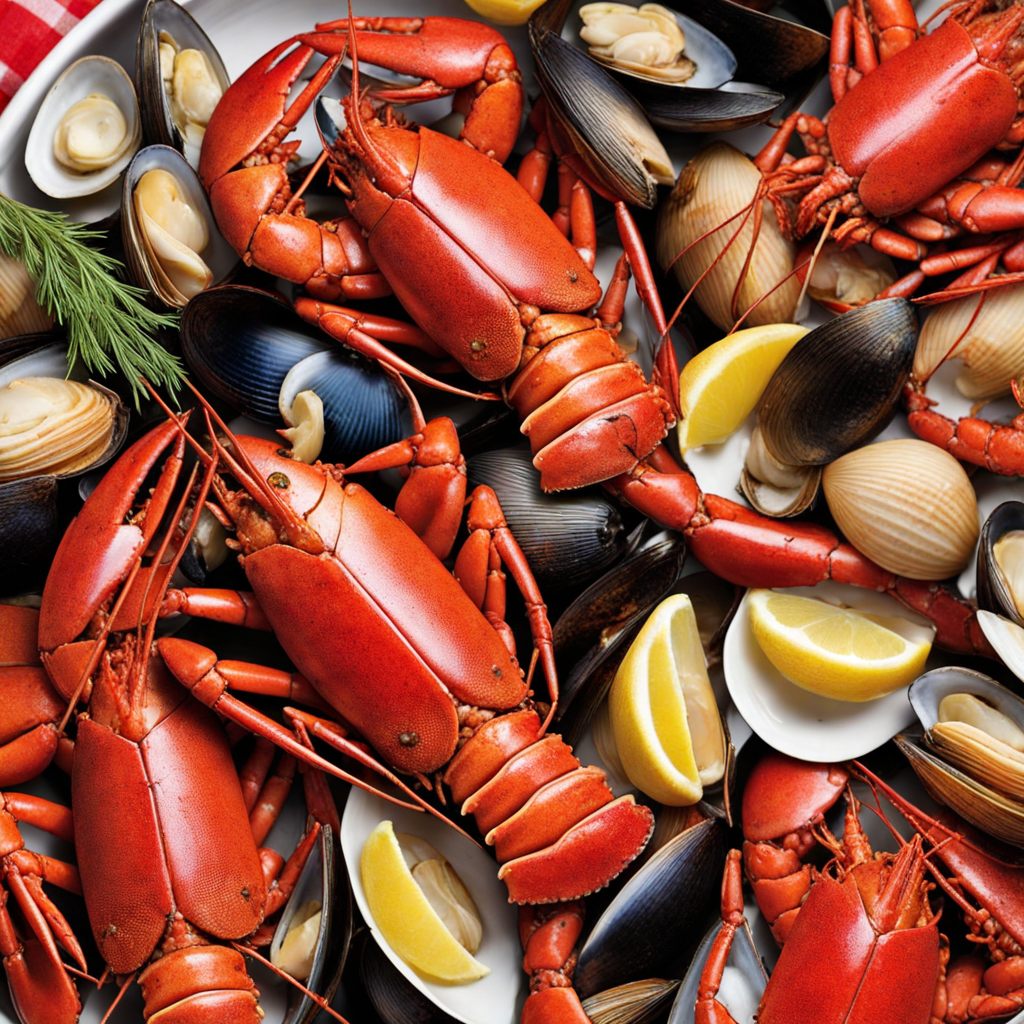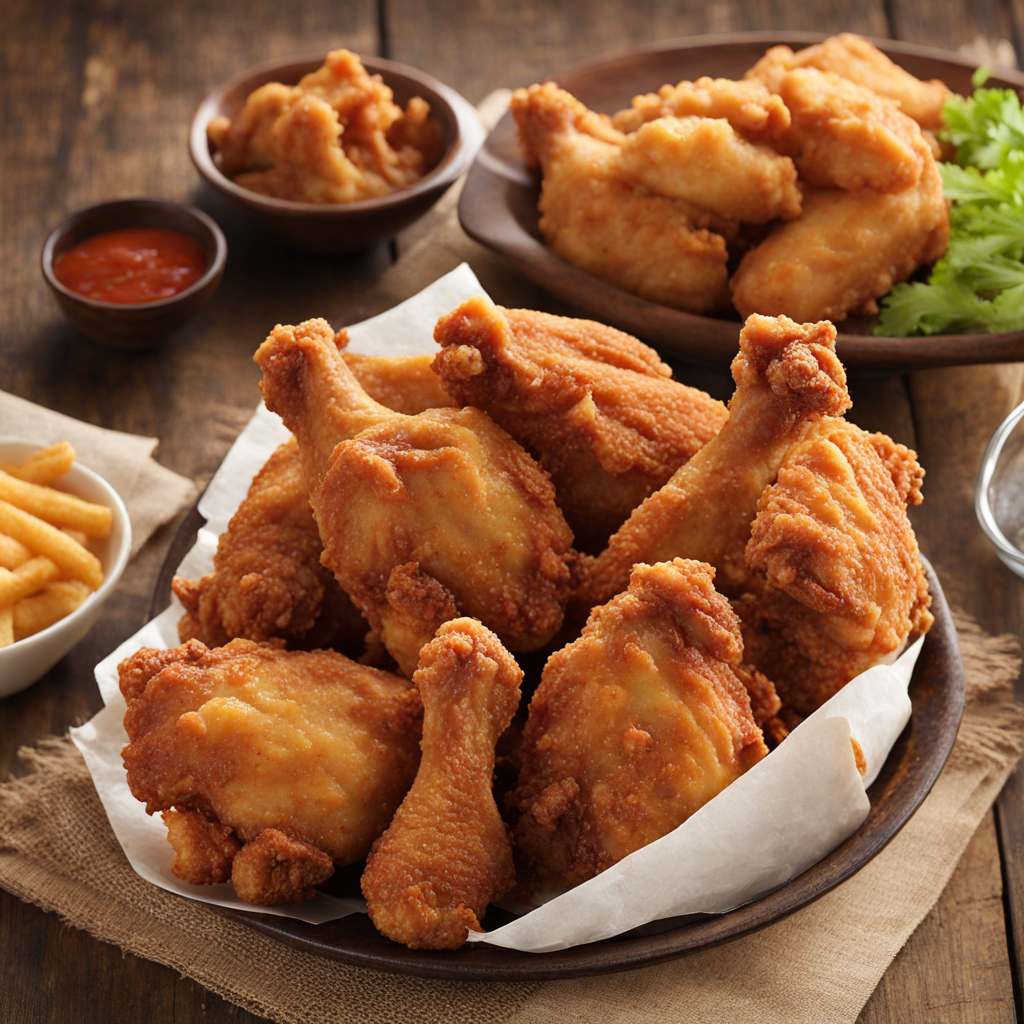Meatloaf
Meatloaf is a classic American dish that embodies comfort food at its finest. Typically made from ground beef, it often includes a blend of breadcrumbs, eggs, and a variety of seasonings, which come together to form a hearty loaf. This dish is versatile, allowing for the incorporation of various ingredients such as onions, garlic, and even vegetables, which not only add flavor but also moisture to the meat. The mixture is shaped into a loaf and baked until golden brown, creating a satisfying crust that encases the tender interior. One of the distinctive features of meatloaf is its glaze, which is often made from ketchup, barbecue sauce, or a combination of both. This sweet and tangy topping caramelizes as it bakes, enhancing the overall flavor and adding a beautiful sheen to the dish. Meatloaf is typically served sliced, allowing for easy portioning, and is often accompanied by classic sides such as mashed potatoes, green beans, or a simple salad. The result is a meal that is both filling and comforting, evoking a sense of nostalgia for many who grew up enjoying it. As you take your first bite of meatloaf, you'll experience a harmonious blend of flavors and textures—the savory richness of the meat, the slight sweetness of the glaze, and the satisfying chew of the breadcrumbs. Each mouthful is a delightful reminder of home cooking, making it a beloved staple in many American households. Whether enjoyed fresh out of the oven or as leftovers the next day, meatloaf is a dish that invites you to savor every bite and appreciate the warmth it brings to the dining table.
How It Became This Dish
The History of Meatloaf: A Culinary American Classic #### Origins Meatloaf, a quintessential dish synonymous with American comfort food, has roots that can be traced back to ancient culinary traditions. While the concept of combining ground meat with fillers to form a loaf shape is not unique to the United States, the modern interpretation that we recognize today began to take shape in the 19th century. The earliest instances of meatloaf-like dishes can be found in ancient Roman cookbooks, where ground meat was mixed with various ingredients and baked. However, it was during the Middle Ages that recipes resembling meatloaf began to proliferate across Europe, including in Germany, where a dish called "Hackbraten" became popular. This dish typically involved ground meat combined with bread, eggs, and spices, then baked in a loaf form. German immigrants brought their culinary traditions to America in the 19th century, laying the groundwork for what would evolve into American meatloaf. #### Cultural Significance The Industrial Revolution and subsequent urbanization in the late 19th and early 20th centuries played a crucial role in the popularization of meatloaf in American households. The rise of canned goods and processed foods made it easier for families to prepare meals quickly and economically. Meatloaf emerged as a practical solution for feeding large families. It was a versatile dish that allowed for the use of leftovers and could easily be stretched to feed more people, making it a staple in the American kitchen. During the Great Depression of the 1930s, meatloaf became even more significant. As families faced economic hardships, the dish provided a way to stretch limited resources. Recipes often included breadcrumbs, oats, or rice, mixed with meat to create a filling meal at a low cost. Cooks learned to use whatever ingredients they had on hand, leading to a variety of regional adaptations and family recipes. Meatloaf was not just a meal; it was a symbol of resilience and resourcefulness during tough times. #### Post-War Popularity and Variations After World War II, meatloaf became a symbol of the American home-cooked meal, often associated with the idealized suburban family life of the 1950s. Cookbooks from this era featured numerous meatloaf recipes, and it became a staple at potlucks and family gatherings. The dish was often served with a glaze of ketchup or barbecue sauce, further cementing its place in American culture. During this time, meatloaf recipes began to diversify, reflecting the melting pot that was America. Regional variations emerged, incorporating local flavors and ingredients. The Italian-American version often included marinara sauce and Italian herbs, while the Southern variant might feature spicy sausage or incorporate cornbread. The 1960s and 1970s saw the introduction of exotic ingredients, such as cheese, vegetables, and international spices, reflecting the growing interest in global cuisine. #### A Dish of Nostalgia In the latter half of the 20th century, meatloaf enjoyed a resurgence in popularity as nostalgia for home-cooked meals grew. It became a comfort food for many, evoking memories of family dinners and gatherings. However, as dietary preferences shifted and awareness of health issues increased, meatloaf faced challenges. The rise of vegetarianism and veganism led to the creation of meatloaf alternatives made from lentils, beans, and grains. These new interpretations allowed the dish to evolve while retaining its original spirit. The 21st century brought about a renewed interest in traditional cooking methods and comfort foods, leading to a revival of meatloaf in restaurants and home kitchens alike. Chefs began to experiment with gourmet versions, incorporating high-quality meats, artisanal ingredients, and creative toppings. Meatloaf made its way onto upscale menus, showcasing its versatility and enduring appeal. #### Modern Interpretations Today, meatloaf is no longer just a simple blend of ground meat and fillers. It has transformed into a canvas for culinary creativity. Chefs and home cooks alike experiment with global flavors, incorporating spices and ingredients from around the world. Asian-inspired meatloaf might feature ginger, soy sauce, and scallions, while Mexican variations could include cumin, corn, and salsa. The use of alternative proteins, such as turkey, lamb, or plant-based options, has further expanded the dish's reach, catering to a broader audience. The advent of social media has also played a role in the resurgence of meatloaf's popularity. Food bloggers and influencers share their unique takes on the dish, inspiring others to experiment with their own recipes. Video platforms have seen a rise in meatloaf cooking demonstrations, showcasing both traditional and modern techniques. This digital age has helped to preserve the dish’s history while allowing it to adapt to contemporary tastes and lifestyles. #### Conclusion Meatloaf is more than just a dish; it is a reflection of American history and culture. From its humble beginnings in ancient kitchens to its status as a beloved comfort food, meatloaf has evolved over centuries, adapting to the needs and tastes of each generation. It embodies resilience and resourcefulness, serving as a reminder of simpler times while embracing innovation. As we look to the future, meatloaf will undoubtedly continue to adapt and thrive, honoring its rich history while remaining relevant in an ever-changing culinary landscape. Whether enjoyed in its classic form or as a modern reinterpretation, meatloaf will always hold a special place in the hearts and kitchens of Americans, symbolizing the warmth of home and the joy of shared meals.
You may like
Discover local flavors from United States


